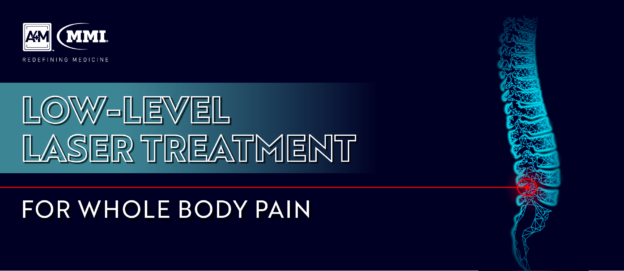As the opioid epidemic continues to plague the United States, there is an urgent need for safe, effective, and non-addictive therapies for chronic pain and pain management. Currently, the CDC estimates that on average, 115 Americans die every day from an opioid-related overdose and the number of people with opioid use disorder continues to rise. Opioid medications not only carry potential for abuse and significant addictive properties, they are also associated with a multitude of adverse effects and the long-term repercussions of their useare unknown.
The treatment of acute and chronic pain poses a significant challenge as pharmacological solutions prove deleterious and unsustainable. A growing body of research aims to propose an alternative method in the form of low level laser therapy (LLLT), which has thus far exhibited successful results. Recently, Erchonia Corporation, a low level laser manufacturer, has been granted marketing clearance by the FDA for its FX 635 model used for treatment of “whole body” musculoskeletal pain.
Erchonia’s FX 635 laser was previously approved for the treatment of heel pain and chronic lower back pain, using low level laser technology to precisely target pain centers, reduce inflammation, and promote biostimulation in the musculoskeletal point of pain origin. This 510(k) clearance is the only whole-body indication based on Level 1 clinical data, allowing the marketing of the device to provide temporary relief from chronic and nociceptive pain in adult patients. Although based largely on previous trials of patients with localized pain, the FDA’s decision included new research which shows promise of the FX 635’s efficacy as a whole body therapy for chronic pain management.
FX 635 for Relief of Chronic Musculoskeletal Pain
Results from a randomized, placebo-controlled trial of more than 200 patients with chronic musculoskeletal pain revealed a 49% reduction in pain post-treatment with the FX 635 without the use of adjunctive therapies.
The FDA clearance was based in part on these findings, which superseded previous results from the 2018 SPACE trial. In that trial, researchers evaluated the effects of opioid and non-opioid medications on moderate to severe chronic pain and found a 20% pain-reduction rate for opioids and 26% for non-opioids.
According to data from the new study submitted to the FDA, low level laser therapy is more effective in the treatment of chronic musculoskeletal pain than opioid or non-opioid pain medication. Moreover, there are no known adverse effects or addictive properties associated with laser treatment.
Benefits of Low Level Laser Therapy
As a non-opioid alternative for pain management, low level laser therapy carries many additional benefits. Through photobiomodulation, treatments increase cellular metabolism and decrease pain and inflammation, reducing both conditions without unwanted side effects. Despite being marketed as a temporary therapy, patients often report long-lasting pain relief. However, results vary depending on the acuity of pain and number of sessions preformed.
Low level laser therapy can be used in the treatment of both acute and chronic conditions; it is particularly effective when administered immediately upon injury to reduce inflammation and speed up the healing process. As such, laser therapy can be tailored to each patient’s needs as the devices offer versatile wavelengths, treatment heads, and delivery options. Therapeutic dosages can be achieved quickly with high-power lasers, making LLLT a fast and effective option.
Currently, several limitations inhibit both research efforts and treatment recommendations for LLLT, including the lack of a standard of care. There have been no long-term studies of laser therapy for pain management – and none specifically for chronic musculoskeletal pain. Additionally, clinical trials often differ in dosage and wavelength measures making it difficult to draw generalized conclusions on the efficacy of the treatment method. Despite these limitations, LLLT may be beneficial for many patients suffering from acute or chronic pain.

